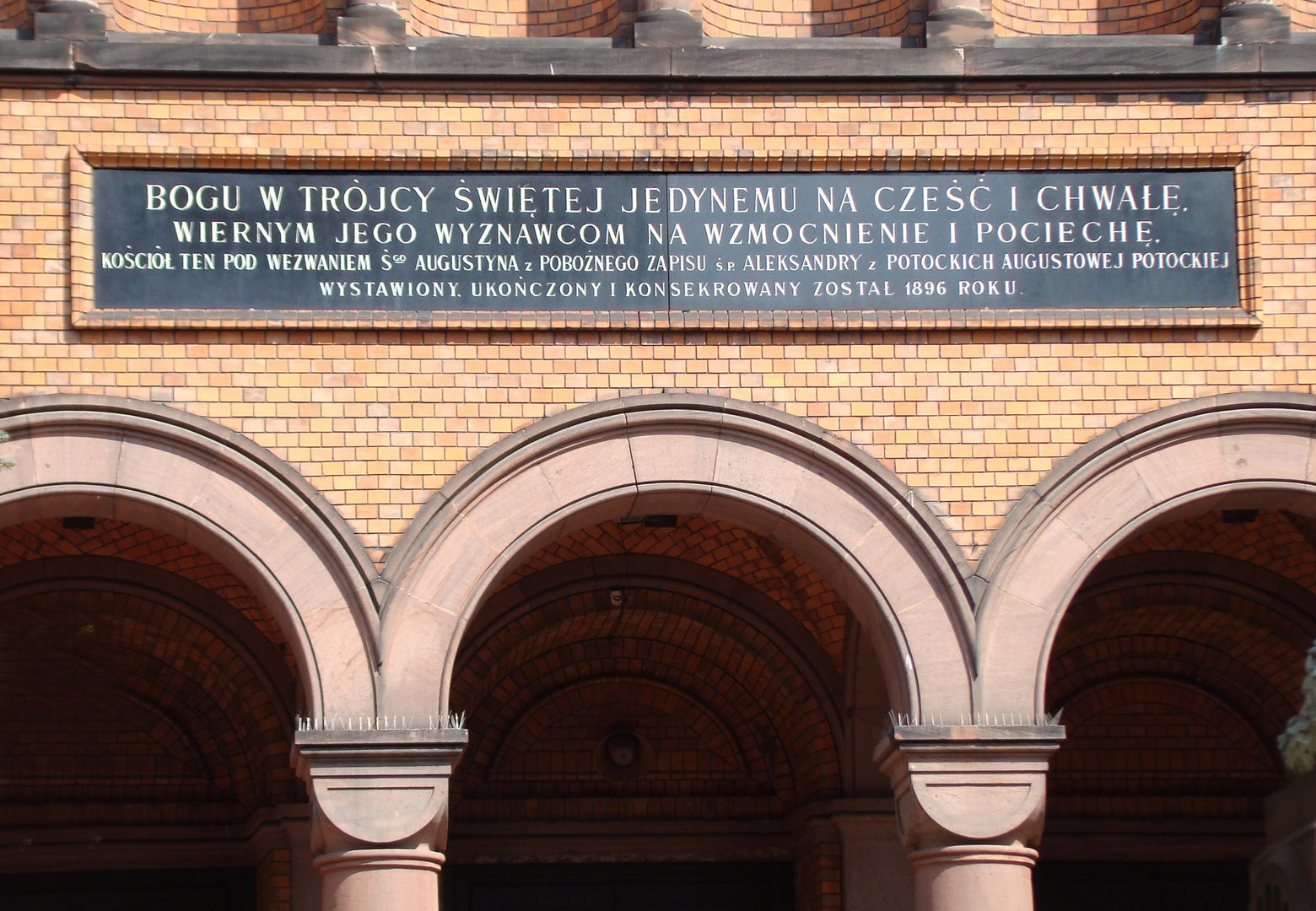St. Augustine's Church in Warsaw
6.26

Overview
St. Augustine's Church, located at 18 Nowolipki Street in Warsaw, is an example of Neo-Romanesque architecture, built of red clinker brick with stone details in brownish-red and beige hues. Its three-nave basilica body with an elongated presbytery and a tall spire in the northeastern corner adjoins the sacristy and chapel. Characteristic decorative elements include a large rose window on the upper level and an asymmetrical tower divided into six stories with various window shapes. The interior of the church features a variable system of supports, pillars, and richly decorated Corinthian capitals. The Neo-Romanesque tower, once the tallest in Warsaw, is crowned with a cross placed on a sphere that was originally gilded and painted black in 1959.
The church serves as the parish church for St. Augustine's Parish and has had many parish priests since 1896, when the first mass was held. The history of the church is linked to Countess Aleksandra Potocka, who financed its construction as a tribute to her deceased husband. The cornerstone was consecrated on October 20, 1892, and the consecration took place in 1905. During World War II, the church found itself within the Warsaw Ghetto and was also a place where Jews were helped, leading to tragic events, including the murder of parish priest Franciszek Garncarek by the Germans. The church was desecrated and converted into a stable, and after the war, it was one of the few surviving buildings in the area. After the war, thanks to funds from the Primate's Council, the church was restored and put back into use. In 2006, a digital organ was purchased, and in the following years, numerous renovations were carried out, including the facade and tower. In 2019, a tragic incident occurred when a man was murdered on the church grounds, attracting media attention. St. Augustine's Church is not only a place of worship but also a witness to Warsaw's turbulent history and a cultural and social zone for the local community.
Location
Tickets
Powered by GetYourGuide
2025 Wizytor | All Rights Reserved